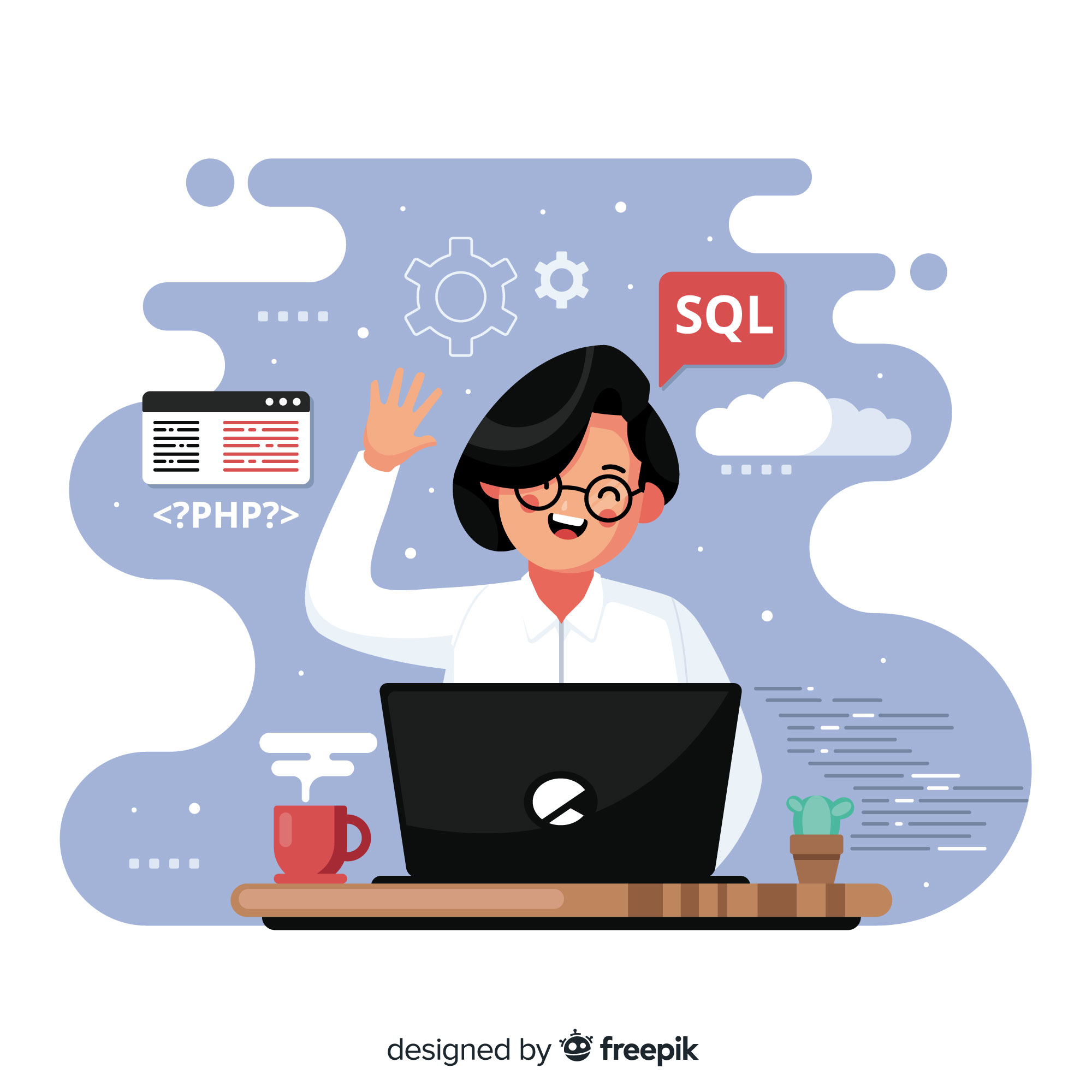Introduction
Website building can be an intricate and complex process. When you set-out to build a website, you have to choose from many different options. Fundamentally, you need to decide on the following key components:
- Where to run your web servers: the cloud, virtual private servers, or actual hardware
- An Operating System
- Web Server Software
- A Database Management System or store
- A programming or coding language
You may end up with a hybrid architecture with multiple datastores. Some of these choices are dependent on others. But with PHP and MySQL, you do not have to pay much attention to this as they are compatible or portable with all major operating systems and many of the minor ones. This is the best advantage of these languages.
What is PHP ?
PHP is a server-side scripting language created specifically for the web. Fundamentally, the developer can embed handy PHP code on a given HTML page that can be executed each time it is visited. The execution happens on the designated web server and the output is conveyed to the user.
PHP source code is open, so one has freedom to use, alter or redistribute it. The acronym PHP originally stood for Personal Home Page but was later changed to PHP Hypertext Preprocessor.
What is MySQL ?
MySQL is a very fast, robust, relational database management system (RDBMS). It enables you to efficiently store, search, sort, and retrieve useful data.
It uses Structured Query Language (SQL), the standard database query language. The MySQL based server controls access to your data to ensure that multiple users can work at it at the same time. It also makes sure that only authorized users are able to enter or gain access.
Strengths of PHP
PHP’s main competitors are Python, Ruby (on Rails or otherwise), Node.js, Perl, Microsoft .NET, and Java. In comparison to these, the strengths of PHP are:
Performance: PHP is very fast. Using a single inexpensive server, one can serve millions of hits per day. It can scale down to the smallest email form and rev-up exponentially to sites such as Facebook and Etsy.
Scalability: With PHP you can effectively and cheaply implement horizontal scaling, i.e. add additional nodes or machines to cope with new demands.
Database Integration: PHP has native connections available to many database systems. In addition to MySQL, one can directly connect to PostgreSQL, Oracle, MongoDB, and MSSQL, among others. Using the Open Database Connectivity (ODBC) standard, one can also connect to any database that provides an ODBC driver. In addition to the native libraries, PHP comes with a database access abstraction layer called the PHP Database Objects (PDOs), which allows consistent access and promotes secure coding practices.
Built-in Libraries: As PHP was designed for use on the Web, it has many built-in functions for web-related tasks. One can generate images on the fly, connect to web services, parse XMLs, work with cookies, send email and generate PDF documents, all with just a few lines of code.
Cost: PHP is free. One can download the latest version at any time from the net for zero charge.
Ease of Learning PHP: The syntax of PHP is based on other programming languages, primarily C and Perl. If you already know such languages or Java, you will be productive using PHP almost immediately.
Object-Oriented Support: PHP includes well-known object-oriented features such as inheritance, private and protected attributes and methods, abstract classes and methods, interfaces, constructors, and destructors. Even some less known features like iterators and traits are also there
Portability: PHP is available for many different operating systems. Well-written code will usually work without modification on a different system running PHP.
Flexibility of Development Approach: PHP allows you to implement small tasks simply, and also easily adapts to implementing large applications.
Source Code: You are allowed access to PHP’s source code. With PHP, unlike commercial, closed-source products, if you want to modify something or add to the language, you are free to do so without needing to wait for the manufacturer to release patches.
Availability of Support and Documentation: Zend Technologies, the company behind the development of PHP, generates funds for it by offering support and releasing software related to it.
Strengths of MySQL
In the relational database space, MySQLs competitors are PostgreSQL, Microsoft SQL Server, and Oracle. There is also a growing trend towards using NoSQL/non-relational databases such as MongoDB. Let’s take a look at why MySQL is still a good choice in many cases.
Performance: Compared to other RDBMSs in its category, MySQL is relatively fast
Low Cost: MySQL is available free of cost under an open-source license and at a low cost under a commercial license. You need a license if you want to redistribute it, say as part of an application.
Ease of Use: Most modern databases use SQL – so if you have used another RDBMS, you will have no trouble adjusting to this one. MySQL is also easier to set up and customize than many similar products.
Portability: MySQL is compatible with many different UNIX systems as well as with Microsoft Windows.
Source Code: As with PHP, you can obtain and modify the source code of MySQL. It provides you with peace of mind, ensuring future continuity and giving you options in an emergency.
Conclusion
PHP stands for PHP Hypertext Preprocessor, and is developed by Zend Technologies. It is a fast and feature-rich scripting language that can be used to embed sophisticated and elegant executable code on HTML pages.
MySQL is a database management system based on Structured Query Language. It is used to store, search and retrieve information quickly and efficiently. It is very powerful and capable of handling a large number of concurrent database connections at the same time.
When used together, PHP and MySQL can be used by talented developers to fabricate very powerful and scalable applications for the Local Area Networks ( LANs ) and the World Wide Web ( Internet ).
